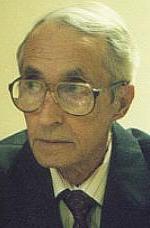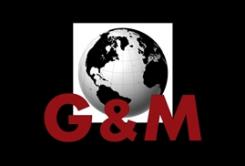The term “sustainable community” sounds warm and fuzzy. Who could possibly oppose a sustainable community? “Sustainable” means something that lasts – or is sustained – forever. When the term is applied to “community,” one might conclude that a sustainable community is one that will last forever. One who draws such a conclusion in today’s world would be wrong, terribly wrong.
The term “sustainable community” is an offspring of the term “sustainable development,” which was coined by the World Commission on Environment and Development back in 1987, and refined in Agenda 21, adopted by 179 nations (including the U.S.) at the U.N. Conference on Environment and Development in 1992. Among the first recommendations found in Agenda 21 is the recommendation that each nation establish its own program of “sustainable development” to implement all the recommendations in the 40 chapters of Agenda 21. President Bill Clinton complied with this recommendation when he issued an Executive Order to create the President’s Council on Sustainable Development.
What the term “sustainable development” really means is development that is dictated by or otherwise approved by government. The term “sustainable communities” means communities that are dictated by or otherwise approved by government. Those who doubt this reality are invited to read Chris Dodd’s Livable Communities Act (S. 1619), and then read Agenda 21. There will be no doubt where Mr. Dodd got the ideas for his bill.
Since the Clinton years, federal agencies have enticed and coerced states and local communities to transform their cities and towns into “sustainable communities” as defined by government. Just last month, three federal agencies doled out $100 million in their “Regional Sustainable Communities Planning Grant Program.” The East-West Gateway Council of Governments in St. Louis got $4.6 million; 45 other regional areas also received healthy grants.
Social engineering by the federal government goes beyond regional government and reaches into counties, cities and towns. Often encouraged by the International Council for Local Environmental Initiatives, the National Council of Mayors, the National Association of County Commissioners and the promise of federal grants, local communities are falling all over themselves to become politically correct sustainable communities.
Sustainable communities present three problems: 1) the initiative for a community to become a sustainable community almost always comes from outside the community; 2) the comprehensive plan through which a community is transformed into a sustainable community always infringes, and in many instances completely destroys, private property rights; and 3) the local community rarely knows anything about the plan until it reaches the final stages of adoption.
This process, of course, is by design. In communities that have been transformed, individuals may discover that they cannot build a house for grandma on five acres of their own land because the county’s comprehensive plan requires no more than one home per 40 acres. Many communities discover that their comprehensive plan includes a provision to incorporate by reference the entire set of 13 different codes developed by the International Code Council. Each of these codes amounts to government dictating human behavior.
These codes go far beyond building and fire safety codes. They include: residential, property maintenance, energy conservation, wildland interface, and other behavior modification codes.
A sustainable community is a community around which government draws an Urban Boundary Zone (UBZ) and forbids city services to be delivered outside the UBZ, prohibits new construction outside the UBZ, and requires residents within the UBZ to live in housing that meets the size and cultural integration standards set forth in the code or comprehensive plan. Sustainable communities are high-density communities where automobiles are discouraged, and bikeways and walkways are the alternative to public transportation.
Obviously, property outside the UBZ has no commercial value and very limited use options. Property inside the UBZ is extremely valuable because it is the only place commercial activity may occur. Unfortunately, many communities have discovered that their plan includes a little known U.N. recommendation (D-3) endorsed by the U.S. back in 1976, which calls on governments to:
… exercise a controlling effect on the land market and to redistribute to the public at large the benefits of the unearned increase in land value.
This means that the increased value of land within the UBZ gets taxed away from the owner, and profits from the sale of land are considered an “unearned increase in land value,” and recovered through taxation in order to “redistribute to the public at large,” as the government sees fit.
Sustainable development is coming to your community, or is already there. Your property rights have been diminished, or soon will be. The only way to protect your community and your property and profit is to reject the entire concept of government-dictated land use and behavior codes. Tea parties across the nation are joining this battle at the local level. Ultimately, local officials may need to be sent packing like congressional Democrats. Learn more about sustainable development and sustainable communities at Sovereignty International.
 Henry Lamb is the author of “The Rise of Global Governance,” Chairman of Sovereignty International , and founder of the Environmental Conservation Organization (ECO) and Freedom21, Inc.
Henry Lamb is the author of “The Rise of Global Governance,” Chairman of Sovereignty International , and founder of the Environmental Conservation Organization (ECO) and Freedom21, Inc.
Graphics added by Gulag Bound









Speak Your Mind
You must be logged in to post a comment.